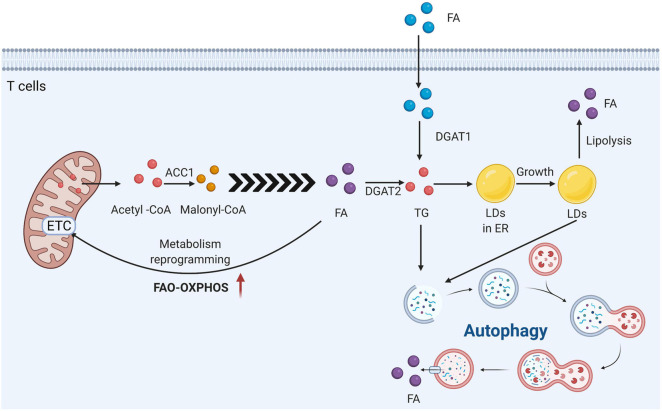FIGURE 6.
T cells rely on the different aspects of lipid metabolism to develop function and differentiation. Acetyl-Coenzyme A carboxylase 1 (ACC1) is the key for the fatty acid generation in T cells. It can convert Acetyl-CoA into Malonyl-CoA. LDs are derived from the endoplasmic reticulum, and DGAT1 and 2 esterify free acylated fatty acids to diacylglycerols to form more inert triacylglycerols, which are stored in the LDs core. DGAT1 is responsible for the esterification of mainly exogenous fatty acids into TG, while DGAT2 is considered to have advantages in the esterification of endogenous synthetic FA. In general, there are three non-mutually exclusive intracellular mechanisms to avoid the toxic effects of acylated long-chain fatty acids: conversion to triglycerides and storage as LDs, increased β-oxidation in the mitochondria, and removal via autophagy.

